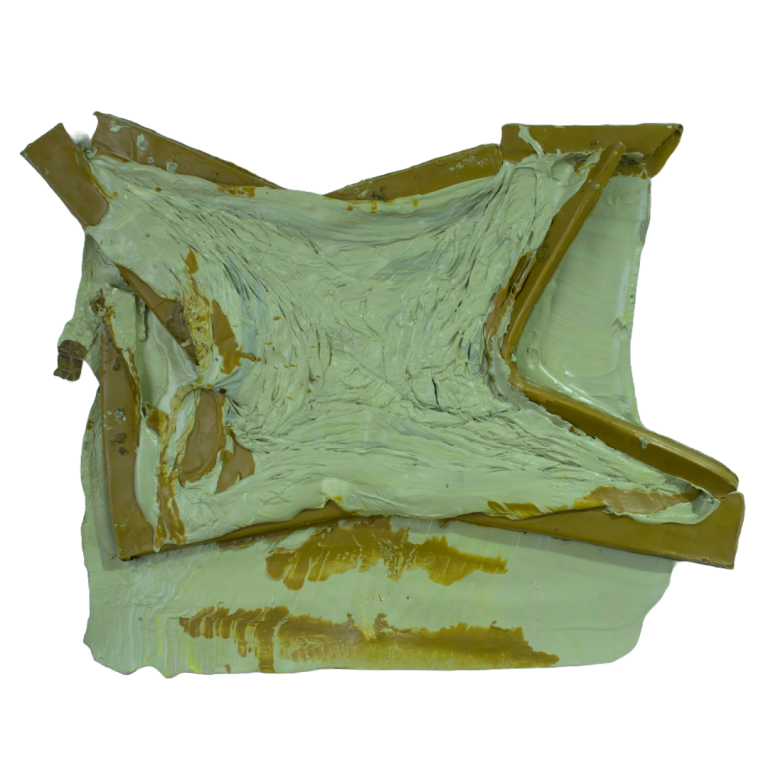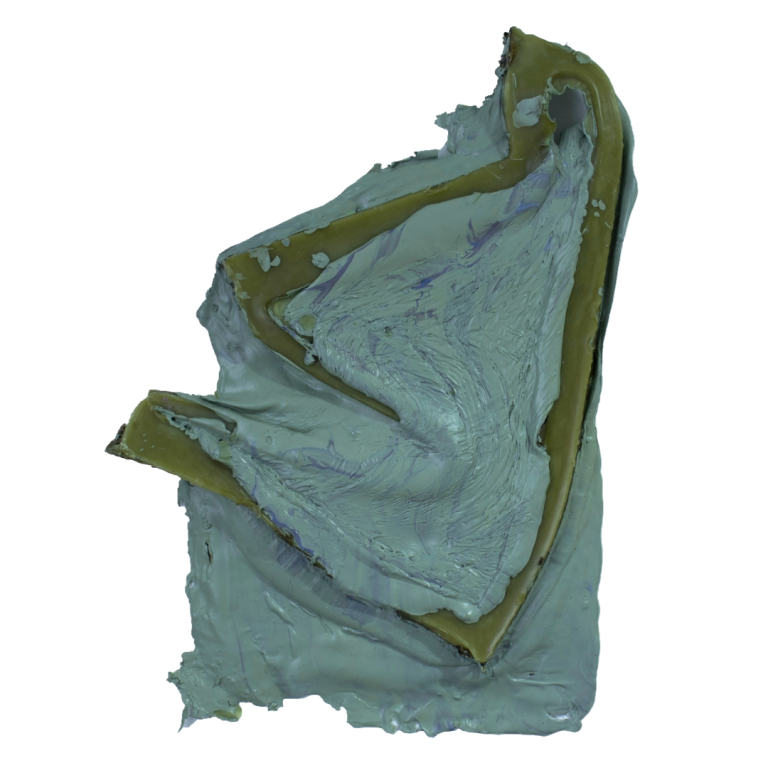The Acrobat

The Acrobat #5, 2022.
46 x 60 x 2 cm. Beeswax and plastic
membrane paint on marine plywood.

The Acrobat #2, 2022.
53 x 38 x 2.5 cm. Beeswax and plastic
membrane paint on marine plywood.

The Acrobat #3, 2022.
61 x 42 x 2 cm. Beeswax and plastic
membrane paint on marine plywood.

The Acrobat #1, 2022.
25 x 17 x 2 cm. Beeswax and plastic
membrane paint on marine plywood.

The Acrobat #4, 2022.
45 x 36 x 1 cm. Beeswax and plastic
membrane paint on marine plywood.
Acrobat tactus
“If I can’t touch, can I see?” is the title that Carolina Rocha attributes to her exhibition. A question that reveals the importance the artist gives to touch. Let’s think. If eventually I am not given the opportunity to touch the object in front of me, if that is forbidden to me, will I be able to grasp it, perceive it… realize that it is there?
The question holds a hint of irony. Indeed, in Carolina’s work, there is a place for what is not seen but “is there,” so to speak. She seeks to impress the viewer through extraordinary procedures. But she does so, like an Akróbatos (acrobat) which, from Latin, means to walk on tiptoe. It is discreet, not very noisy but leaves a trace… a trace that is worth following, just as the artist allows the beeswax in her mold-containers to dry out.
Intuition is the filter in this kind of dance between natural matter and artificial matter (the pigment she puts in the wax) and in the four macro photos that are a kind of x-ray of the drawings she produces. It is intuition that will account for the moving reality presented before the artist. A human form of thought that brings consciousness back to the inner duration of each individual.
Art is this experimentation or expression of singular reality. It is the flow of duration that constitutes the most intimate reality of all things. The artist does not intend to represent sensible forms, even though sometimes it may seem so. Carolina arranges means and techniques to express singularities and lead the viewer to also experience these singularities.
In a way, this exhibition deals with what we can abstract, that is, what separates, removes, subtracts. The world of agreements and recognitions does not appeal to her. It is directed towards accident, what happened but could not have happened. A controlled accident, which does not let itself be fatally injured. The work does not die in this accident, on the contrary, the accident is the cause of her works entering into process and living.
This accident that occurs is the result of chaos discharged into the medium the artist uses. A germ-catastrophe of rhythm, the principle of intensity, of sensation in the work. It is power/dynamism: a path to essence. Art fights with chaos, to make it sensible and the artist captures a piece of chaos, whether in a mold-container or in a trembling photo taken of a drawing. The flow of beeswax in the mold and the trembling hand, the slight deviation given to a photograph taken of a drawing, is her germ-chaos.
It is something that the artist directs and at the same time distances herself from the taught, domesticated. The notion of germ-chaos means that there is something the artist places in her work to begin producing lines, which are germinal. What the artist aims for are the minimal differences, the chaos that seethes microscopically under the large visible units, this is for her the “real experience.”
Capturing the essence of art is describing the phases of the process, as the German philosopher Georg Simmel argued. This process elaborated by Carolina is genetic, it is from it that one captures the way in which the genesis emerges in the work in a nascent state and from it one glimpses the maturation of the finished work.
Text by Pedro Arrifano published in the catalog of the exhibition “If I can’t touch, can I see?” held at the Ante-Sala and Salão da BASE, 2022.